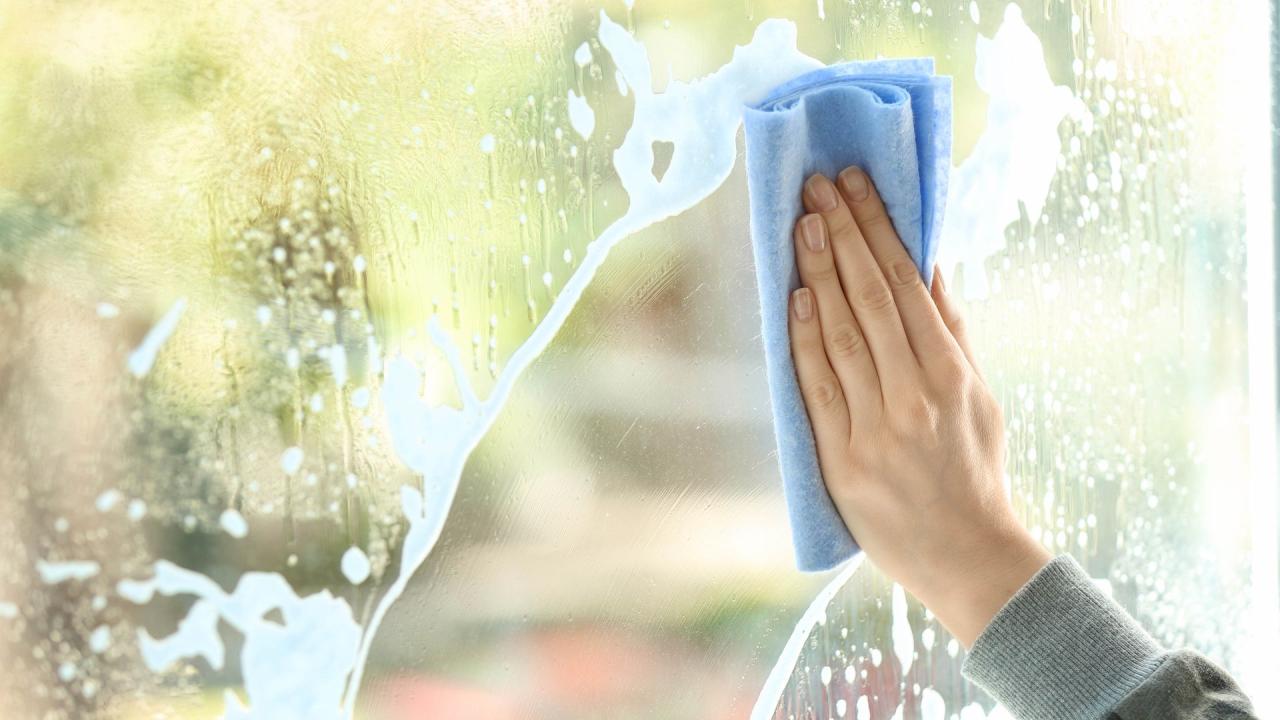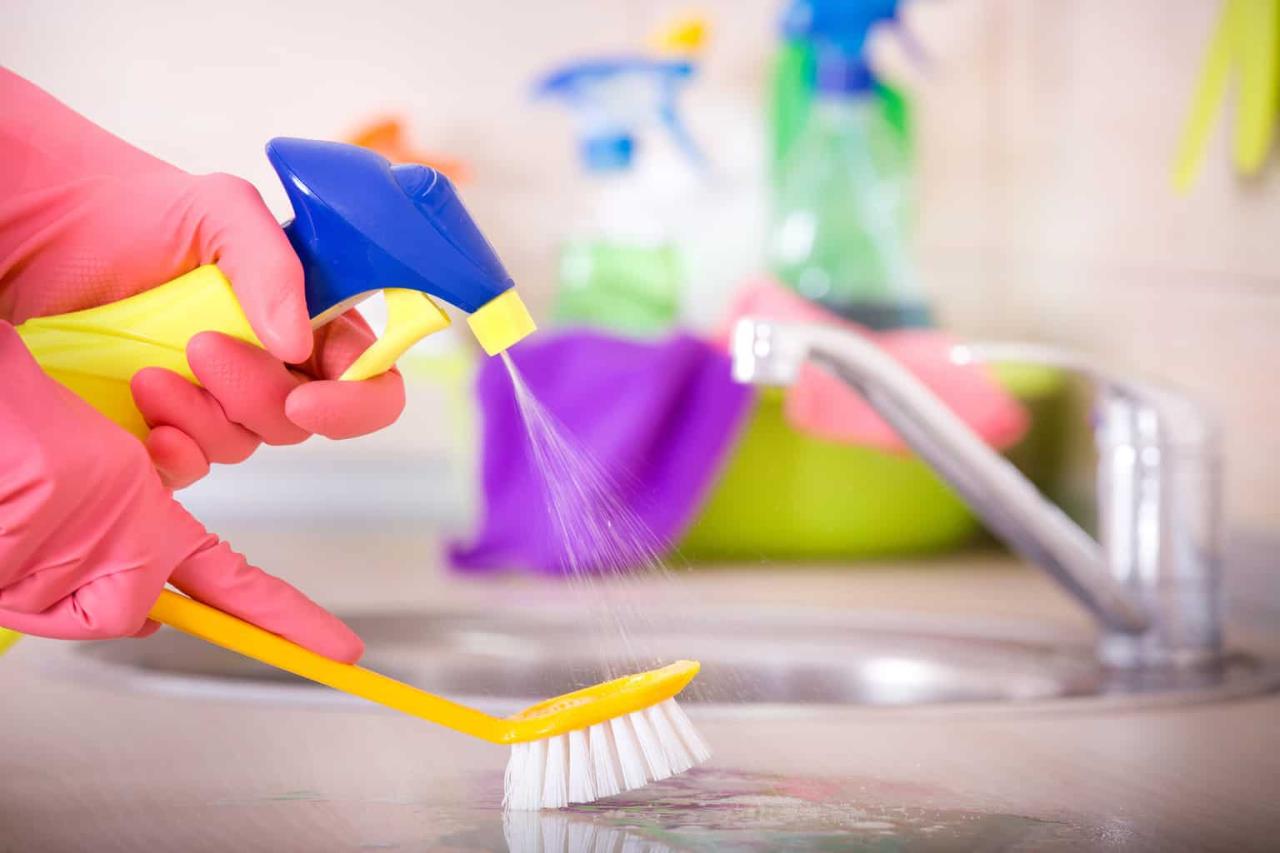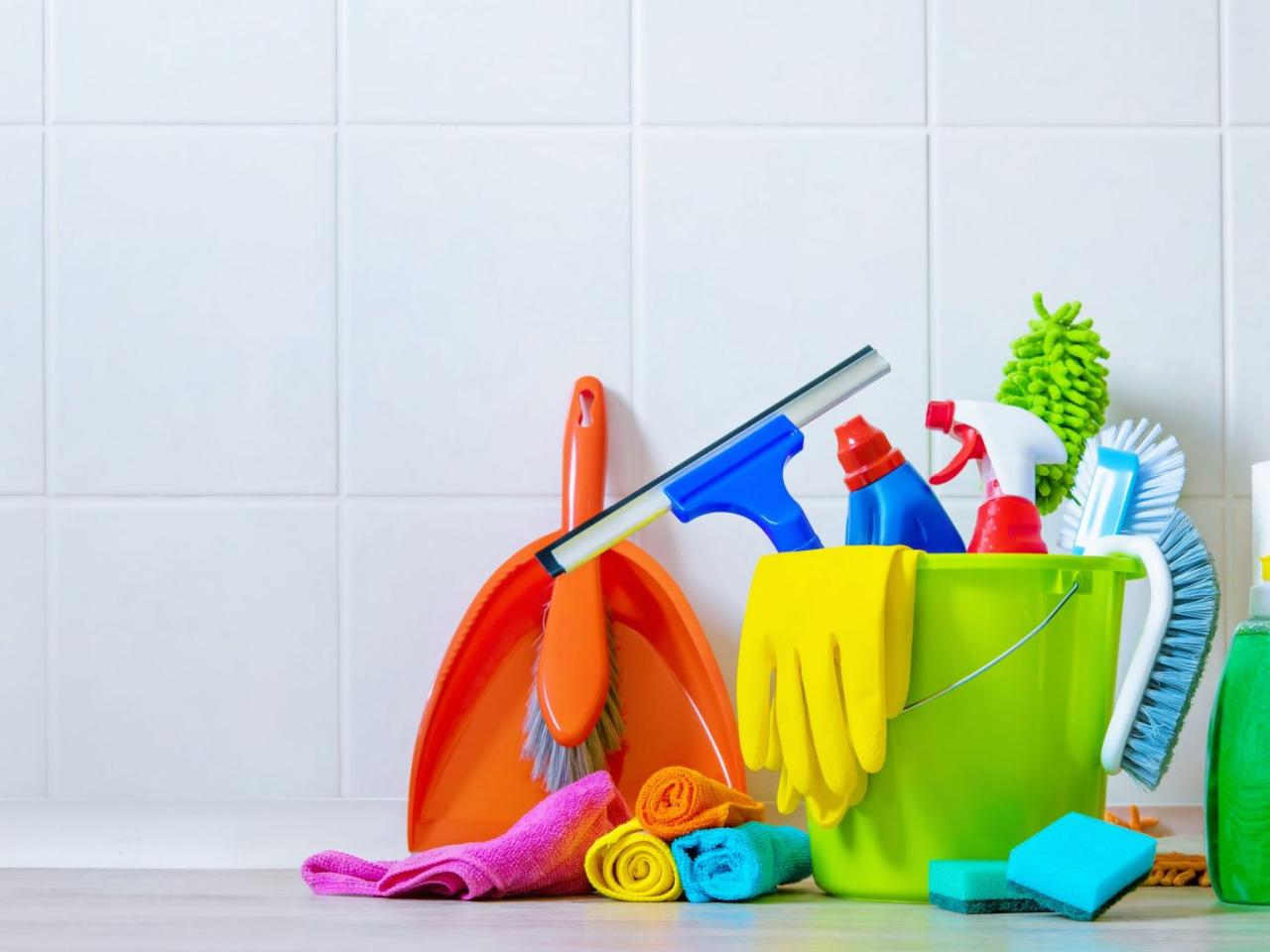Maintaining a healthy aquarium environment hinges on proper filter upkeep. Regular cleaning prevents the buildup of harmful debris, ensuring optimal water quality for your aquatic companions. This guide provides a comprehensive approach to cleaning various aquarium filter types, from canister to internal filters, offering detailed instructions and essential tips for success.
Understanding the specific needs of your filter type is crucial. This guide details the frequency and methods required for each, ensuring that your aquarium’s filtration system functions efficiently and effectively. From gathering the right tools to performing the cleaning process itself, we’ll walk you through every step to keep your aquarium thriving.
Introduction to Aquarium Filter Cleaning

Regular aquarium filter cleaning is crucial for maintaining a healthy and thriving aquatic environment. A clean filter effectively removes waste products and excess nutrients, preventing the buildup of harmful toxins that can stress and even kill fish and other aquatic life. Neglecting filter maintenance can lead to a rapid deterioration of water quality, causing ammonia and nitrite spikes, which are toxic to fish.
This, in turn, can lead to illness, fin rot, and even death. Understanding the different types of filters and their specific cleaning needs is essential for maintaining optimal water parameters.Proper filter maintenance is paramount to the well-being of your aquarium inhabitants. Ignoring regular cleaning can lead to a cascade of problems, ranging from minor discomfort to severe health issues.
A build-up of organic waste in the filter media can lead to an overabundance of harmful bacteria, eventually leading to imbalances in the delicate nitrogen cycle. This cycle is critical for maintaining the overall health and longevity of your aquarium ecosystem. Therefore, consistent cleaning practices are essential to prevent these potential problems.
Different Types of Aquarium Filters
Aquarium filters come in various forms, each designed to perform different functions. The key factors to consider when choosing a filter type are the size of the aquarium and the specific needs of the fish and other inhabitants. Understanding the filter’s function will help determine the appropriate cleaning frequency.
Filter Function and Cleaning Frequency
The function of a filter is to remove impurities from the water, ensuring a healthy and safe environment for aquatic life. Different filter types utilize different mechanisms for achieving this. The cleaning frequency depends on the filter’s type and capacity. Regular cleaning is essential to prevent clogs and ensure efficient filtration.
| Filter Type | Cleaning Frequency | Description | Additional Notes |
|---|---|---|---|
| Canister Filter | Every 2-4 weeks | Canister filters are typically placed outside the aquarium, drawing water in and filtering it before returning it to the tank. They are often larger and more powerful than other types, making them suitable for larger aquariums. They use various filter media like ceramic rings, sponges, and activated carbon. | Regular cleaning involves removing the filter media, rinsing it thoroughly under a gentle stream of water, and replacing it if necessary. Inspect the filter for any blockages. |
| Hang-on-back Filter | Weekly | Hang-on-back filters are attached to the back of the aquarium, and they are effective for medium-sized tanks. Water is drawn into the filter and then returned to the tank, keeping the water clean and circulating. They often contain a sponge filter media. | Weekly cleaning involves removing the sponge filter, rinsing it under a gentle stream of water, and ensuring it is free of debris. |
| Internal Filter | Bi-weekly | Internal filters are placed inside the aquarium. They are ideal for smaller aquariums, keeping the water clean by circulating it through the filter media. They commonly utilize a sponge filter and sometimes include ceramic rings. | Bi-weekly cleaning involves carefully removing the filter media, rinsing it gently, and ensuring no blockages are present. Consider replacing filter media if it shows significant wear. |
Gathering Necessary Materials
Proper aquarium filter cleaning requires the right tools and solutions to ensure a healthy environment for your fish. Careful preparation is crucial to minimize stress on your aquatic inhabitants and maintain water quality. Choosing the correct materials is vital to prevent damage to the filter components and ensure effective cleaning.
Essential Tools
Preparing for filter cleaning involves gathering specific tools for each stage. A comprehensive kit ensures a thorough and safe cleaning process. The tools listed below are essential for various filter types and sizes.
| Tool | Purpose | Brand Recommendations |
|---|---|---|
| Bucket | Holding water safely during filter disassembly and cleaning. A suitable size is crucial to avoid spills and ensure adequate water volume for filter soaking. | 5-gallon plastic buckets from brands like Rubbermaid or similar. Consider the filter’s size and volume when selecting the bucket. |
| Small container | Rinsing filter components and removing excess debris. A small, shallow container aids in thorough cleaning without wasting cleaning solution. | Plastic cups, small bowls, or a container specifically designed for rinsing delicate filter parts. Consider the filter components’ size when selecting the container. |
| Tweezers | Removing small debris and particles from hard-to-reach areas of the filter. | Fine-tipped tweezers with comfortable handles are ideal. Look for stainless steel or other corrosion-resistant materials. |
Cleaning Solutions
Using the correct cleaning solution is paramount for effective and safe cleaning. Tap water contains chlorine and chloramines, harmful chemicals that can harm your fish. Using a suitable solution ensures a clean and safe environment for your aquatic pets.
A suitable cleaning solution is crucial to ensure the health of your aquarium’s inhabitants. Avoid tap water, as it contains chlorine and chloramines, which can harm the fish. Instead, use dechlorinated water, which is prepared by adding a dechlorinator to tap water. This process neutralizes the harmful chemicals, ensuring a safe cleaning environment for your aquarium.
Preparing the Cleaning Solution
The procedure for preparing the cleaning solution is straightforward and essential for maintaining a safe environment.
- Fill the bucket with tap water.
- Carefully measure the appropriate amount of dechlorinator according to the product instructions. Overdosing can be detrimental to the fish.
- Pour the dechlorinator into the bucket with tap water. Stir gently to ensure proper mixing.
- Allow the dechlorinated water to sit for the recommended time, typically 24-48 hours, to allow the chlorine and chloramines to dissipate completely.
- Ensure the water is clear and odorless before use. This indicates the solution is safe for your aquarium. If any chlorine or chloramine is still present, you may repeat the process until the solution is safe.
Cleaning Procedures for Different Filter Types

Proper aquarium filter maintenance is crucial for maintaining a healthy aquatic environment. Regular cleaning removes accumulated debris, preventing the build-up of harmful substances and promoting optimal water quality for your fish and other aquatic inhabitants. By following the correct procedures for different filter types, you can ensure effective cleaning and maintain the efficiency of your filtration system.Effective cleaning is more than just a superficial task; it’s a vital step in maintaining a thriving aquarium ecosystem.
Each filter type has specific cleaning requirements that must be followed to prevent damage and ensure optimal performance. Ignoring these procedures can lead to reduced filtration efficiency, potentially causing water quality issues and harming your aquatic pets.
Canister Filter Cleaning
Canister filters are known for their powerful filtration capacity. To clean a canister filter, a methodical approach is essential. First, disconnect the filter from the aquarium. Then, carefully and cautiously, disconnect the inflow and outflow tubes. Next, cautiously remove the filter from the tank.
Disassemble the filter, separating the various components, such as the filter cartridges or media containers. Carefully clean each component thoroughly using a soft brush or a sponge. Rinse the components thoroughly under running water to remove all debris and particles. Reassemble the filter, ensuring all connections are secure. Reconnect the inflow and outflow tubes, and return the filter to the aquarium.
Hang-on-Back Filter Cleaning
Hang-on-back filters are a popular choice for their ease of installation. Cleaning these filters involves several key steps. First, carefully remove the filter from the aquarium. Next, carefully detach the filter body from the tank. Then, clean the filter body using a soft brush or a sponge to remove any accumulated debris.
Finally, rinse the filter media thoroughly under running water to eliminate any accumulated debris. Replace the filter media and carefully reconnect the filter to the tank.
Internal Filter Cleaning
Internal filters are commonly used in smaller aquariums. Their cleaning procedure is relatively straightforward. First, carefully remove the filter from the aquarium. Next, carefully detach the filter from the tank. Then, clean the filter housing using a soft brush or sponge to remove any debris.
Finally, carefully remove and rinse the filter media under running water to remove any accumulated debris. Replace the filter media and reconnect the filter to the aquarium.
Comparison of Cleaning Steps
| Filter Type | Step 1 | Step 2 | Step 3 |
|---|---|---|---|
| Canister Filter | Remove the filter from the tank and disconnect tubes. | Disassemble the filter and clean all components. | Thoroughly rinse all components and reassemble the filter. |
| Hang-on-back Filter | Remove the filter from the tank and detach the body. | Clean the filter body using a soft brush or sponge. | Rinse the filter media thoroughly and replace. |
| Internal Filter | Remove the filter from the tank and disconnect it. | Clean the filter housing with a soft brush or sponge. | Clean and rinse the filter media and replace. |
Importance of Debris Removal and Rinsing
Thorough rinsing of filter components is vital to remove accumulated debris, preventing the build-up of harmful substances in the water. Accumulated debris can contribute to the deterioration of water quality, leading to potential health issues for your aquatic pets. By removing and rinsing the debris, you maintain a clean and healthy environment for your fish and other aquatic inhabitants.
Consistent cleaning prevents the clogging of filter media, which ensures optimal filtration performance and maintains the overall health of your aquarium ecosystem.
Maintaining Filter Media

Proper maintenance of filter media is crucial for maintaining a healthy aquarium environment. Clean and functioning filter media effectively removes waste products and promotes a balanced ecosystem, contributing to the overall well-being of your fish and other aquatic inhabitants. Regular cleaning and replacement are essential for optimal filter performance.The various types of filter media, with their unique characteristics and functions, play a vital role in water filtration.
Understanding their individual roles and how to maintain them properly is key to ensuring the long-term health and prosperity of your aquarium.
Types of Filter Media and Their Functions
Different filter media serve distinct purposes in the aquarium filtration process. Understanding their individual roles is crucial for optimizing water quality.
- Mechanical Media: This type of media physically traps particulate matter, such as uneaten food, fish waste, and debris. Examples include filter sponges, filter floss, and filter cartridges. Mechanical media is essential for removing the initial layer of contaminants from the water, preparing it for further filtration stages.
- Chemical Media: This media works by absorbing dissolved or suspended chemicals from the water. Activated carbon, resins, and ceramic media are examples. These media remove odors, excess chlorine, and other harmful chemicals, enhancing water clarity and improving the overall water parameters.
- Biological Media: This type of media provides a surface area for beneficial bacteria to colonize. Bio-balls, ceramic rings, and bio-media are common examples. These bacteria are essential for converting harmful ammonia and nitrite into less toxic nitrates, vital for a healthy aquarium ecosystem.
Cleaning and Replacing Filter Media
The frequency of cleaning and replacement depends on the type of media, the size of the aquarium, and the number of fish. Regular inspection and maintenance are critical for maintaining optimal filter performance.
- Mechanical Media: Regularly clean or replace mechanical media, such as filter sponges or floss, as needed. Accumulated debris can hinder water flow and compromise the filter’s effectiveness. Frequent cleaning prevents the clogging of the filter media, maintaining the filter’s ability to remove particles effectively.
- Chemical Media: Chemical media, such as activated carbon, needs to be replaced periodically, typically every 4-6 weeks. This is because its effectiveness diminishes as it becomes saturated with impurities. Proper replacement ensures continuous removal of unwanted chemicals from the aquarium water.
- Biological Media: Biological media, such as bio-balls, should not be cleaned by scrubbing, as this can damage the beneficial bacteria colonies. Rinsing in aquarium water or a mild solution, such as a very diluted aquarium cleaner, is usually sufficient. Replacements are usually not necessary unless the filter has been thoroughly cleaned, or in cases of severe contamination.
Effectiveness of Different Filter Media Types
The effectiveness of each filter media type varies depending on the specific application. A combination of filter media types often provides the most comprehensive filtration solution.
- Mechanical Media: Effective at removing larger particles, but less effective at removing dissolved impurities. A combination of mechanical and chemical media can provide better overall water quality.
- Chemical Media: Highly effective at removing specific dissolved chemicals and impurities. Activated carbon, for instance, is effective at removing chlorine, chloramine, and other impurities.
- Biological Media: Critical for maintaining a healthy biological balance in the aquarium. The beneficial bacteria residing on these media break down harmful substances, converting ammonia and nitrite into nitrates. This is an essential component for maintaining a thriving ecosystem.
Filter Media Types and Characteristics
The table below summarizes common filter media types and their key characteristics:
| Filter Media Type | Characteristics | Function |
|---|---|---|
| Filter Sponges | Simple, affordable, mechanical filtration. | Traps particulate matter. |
| Activated Carbon | Removes chlorine, chloramine, odors, and impurities. | Chemical filtration. |
| Bio-balls | Provides large surface area for beneficial bacteria. | Biological filtration. |
| Ceramic Rings | Porous structure for bacterial colonization. | Biological filtration. |
Longevity of Filter Media
The longevity of filter media varies greatly depending on usage, water quality, and the type of media. For instance, filter sponges can last several weeks to months before needing replacement, while activated carbon needs to be replaced more frequently.
Post-Cleaning Procedures
Properly reassembling and reinstalling your aquarium filter is crucial for maintaining a healthy and thriving aquatic environment. Incorrect reinstallation can lead to significant issues, including reduced water flow, decreased filtration efficiency, and even damage to the filter itself. This section will guide you through the steps to ensure a smooth and successful reinstallation process.Careful attention to detail during the reassembly and reinstallation phases is vital to avoid disrupting the delicate balance of your aquarium’s ecosystem.
Reassembling the Filter
Thorough reassembly of the filter components is essential to restore optimal functionality. Incorrect connections can result in leaks, inadequate water flow, and reduced filtration capacity. Each filter type has unique components and assembly procedures. Refer to the manufacturer’s instructions for specific guidance.
- Verify all filter components are clean and undamaged. Inspect gaskets, o-rings, and seals for any signs of damage or wear. Replace any damaged parts as needed.
- Carefully reassemble the filter housing, ensuring all connections are secure and tight. This step prevents leaks and maintains proper water flow.
- Reinstall the filter media in the appropriate chambers. Follow the manufacturer’s recommendations regarding media placement and type. Ensure the media is correctly positioned and not obstructing water flow.
- Reconnect the filter tubing and electrical connections, if applicable. Ensure all connections are secure to prevent water leaks or electrical hazards.
Importance of Proper Filter Reinstallation
Proper reinstallation of the filter is critical for maintaining the aquarium’s water quality. Improper reinstallation can result in several negative consequences. Reduced filtration efficiency can lead to an accumulation of waste products, negatively impacting water quality and potentially harming the fish. Improper reinstallation can also lead to uneven water flow, potentially causing stress or harm to aquatic life.
Proper filter reinstallation is paramount to the health of your aquarium ecosystem.
Procedure for Returning the Filter to the Aquarium
Returning the filter to the aquarium must be done cautiously to avoid disrupting the water parameters and harming the fish. Avoid any sudden changes in water flow or temperature.
- Turn off the aquarium’s power supply to prevent electrical hazards.
- Carefully disconnect the existing filter from the aquarium’s plumbing.
- Gently lower the newly assembled filter into its designated position within the aquarium. Ensure the filter is securely placed and not obstructing any other components or equipment.
- Reconnect the filter to the aquarium’s plumbing. Double-check all connections for leaks or loose fittings.
- Turn on the aquarium’s power supply and monitor the water flow for any irregularities. If everything seems normal, observe the aquarium for any signs of stress in the fish or other inhabitants.
Potential Risks of Improper Reinstallation
Improper reinstallation can lead to a cascade of problems. Leaking filters can contaminate the water, leading to ammonia spikes and potential fish death. Inadequate water flow can cause stagnation and reduced oxygenation, creating a hostile environment for the fish. Unsecured connections can result in filter malfunctions, requiring costly repairs or replacements. Incorrect media placement can hinder filtration efficiency, resulting in water quality deterioration.
Step-by-Step Guide for Returning the Filter to the Tank
- Preparation: Turn off the aquarium’s power supply and disconnect the old filter from the plumbing. Verify the newly cleaned filter is fully assembled and secure.
- Placement: Gently lower the filter into its designated position in the aquarium, ensuring it is stable and not obstructing other equipment.
- Plumbing Connection: Securely reconnect the filter to the aquarium’s plumbing, ensuring all connections are tight and leak-free.
- Power Restoration: Turn on the aquarium’s power supply and monitor the water flow. Check for any leaks or unusual sounds.
- Observation: Observe the aquarium for any signs of stress or abnormalities in the fish behavior or water parameters.
Troubleshooting Common Issues

Maintaining a healthy aquarium relies heavily on a properly functioning filter. Understanding potential problems and their solutions is crucial for preventing stress on your aquatic inhabitants and ensuring the longevity of your aquarium environment. This section provides a comprehensive guide to troubleshooting common filter issues.Identifying and addressing problems promptly can prevent minor issues from escalating into more significant problems.
This section will detail common problems encountered during filter maintenance, Artikel potential causes, and provide effective solutions to restore optimal filter performance.
Common Filter Problems and Solutions
Addressing filter problems promptly is essential for maintaining a healthy aquarium. The table below provides a concise overview of common filter issues, their possible causes, and corresponding solutions.
| Problem | Possible Cause | Solution |
|---|---|---|
| Filter is not working | Clogged filter media, power outage, or a faulty electrical connection. | First, check for a power outage or loose electrical connections. If the filter media is clogged, carefully clean or replace the filter media. If the problem persists, consult your filter’s user manual or contact a qualified aquarist. |
| Water is cloudy after cleaning | Insufficient rinsing of filter components, introduction of debris during cleaning, or inadequate rinsing of the aquarium substrate during filter maintenance. | Thoroughly rinse all filter components, including the filter media, filter housing, and any other removable parts under running, dechlorinated water. Avoid introducing any additional debris into the tank during cleaning. Also, consider gently siphoning or vacuuming any accumulated debris from the substrate. |
| Filter produces excessive noise | Clogged filter media, loose components within the filter housing, or improper filter placement. | Clean or replace the filter media. Ensure all components are securely fastened within the filter housing. Adjust the filter’s position to prevent contact with other aquarium components. |
| Filter cycles too slowly | Insufficient filter media or inadequate filter size for the aquarium’s volume. | Increase the filter media volume. If the filter is undersized for the aquarium’s volume, consider upgrading to a larger filter. |
| Filter leaks | Damaged filter housing, faulty connections, or improper installation. | Check for any cracks or damage to the filter housing. Ensure all connections are tight and properly sealed. Reinstall the filter according to the manufacturer’s instructions. If the leak persists, consult with a qualified aquarist or contact the filter manufacturer for assistance. |
Preventative Measures for Avoiding Filter Problems
Implementing preventive measures can significantly reduce the likelihood of encountering filter-related issues.
- Regular Cleaning Schedule: Establishing a consistent cleaning schedule for your filter media will help prevent clogs and ensure optimal water quality. Cleaning your filter regularly, following the recommended schedule by the manufacturer, is essential for preventing clogs and ensuring optimal water quality.
- Appropriate Filter Size: Choosing a filter that is appropriately sized for your aquarium’s volume is vital. An undersized filter will struggle to maintain water quality, while an oversized filter may be unnecessarily expensive and complex.
- Proper Installation: Correct installation of the filter is critical. Following the manufacturer’s instructions ensures optimal functionality and reduces the risk of leaks or other installation-related problems.
- Quality Filter Media: Select high-quality filter media that is compatible with your aquarium’s needs. This ensures efficient filtration and prevents premature clogging.
- Monitor Water Parameters: Regular monitoring of water parameters, including ammonia, nitrite, and nitrate levels, allows for early detection of potential problems that might impact filter performance. If you notice unusual fluctuations in water parameters, it may indicate a filter issue.
Last Point

In conclusion, regular aquarium filter maintenance is vital for a healthy ecosystem. By following the step-by-step procedures Artikeld in this guide, you can ensure your aquarium filter operates optimally, promoting the well-being of your fish and other aquatic life. Remember, proper cleaning techniques, appropriate tools, and careful reinstallation are key to a successful cleaning process. This comprehensive guide will equip you with the knowledge to keep your aquarium’s filtration system running smoothly and efficiently.